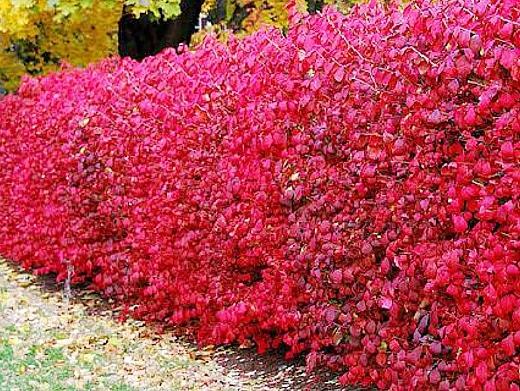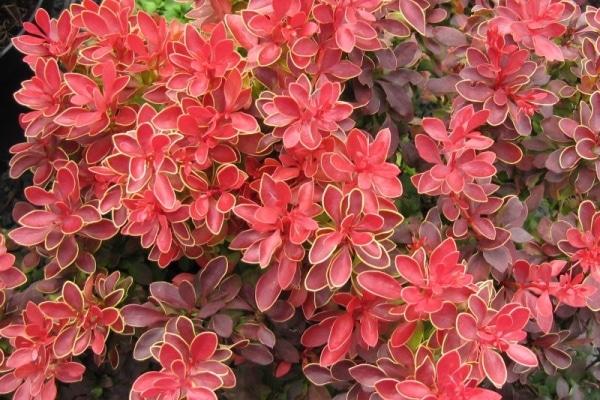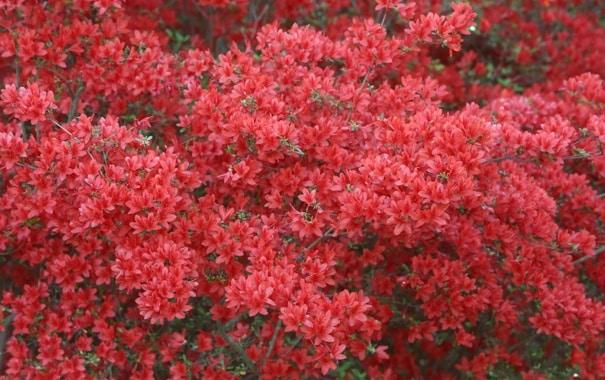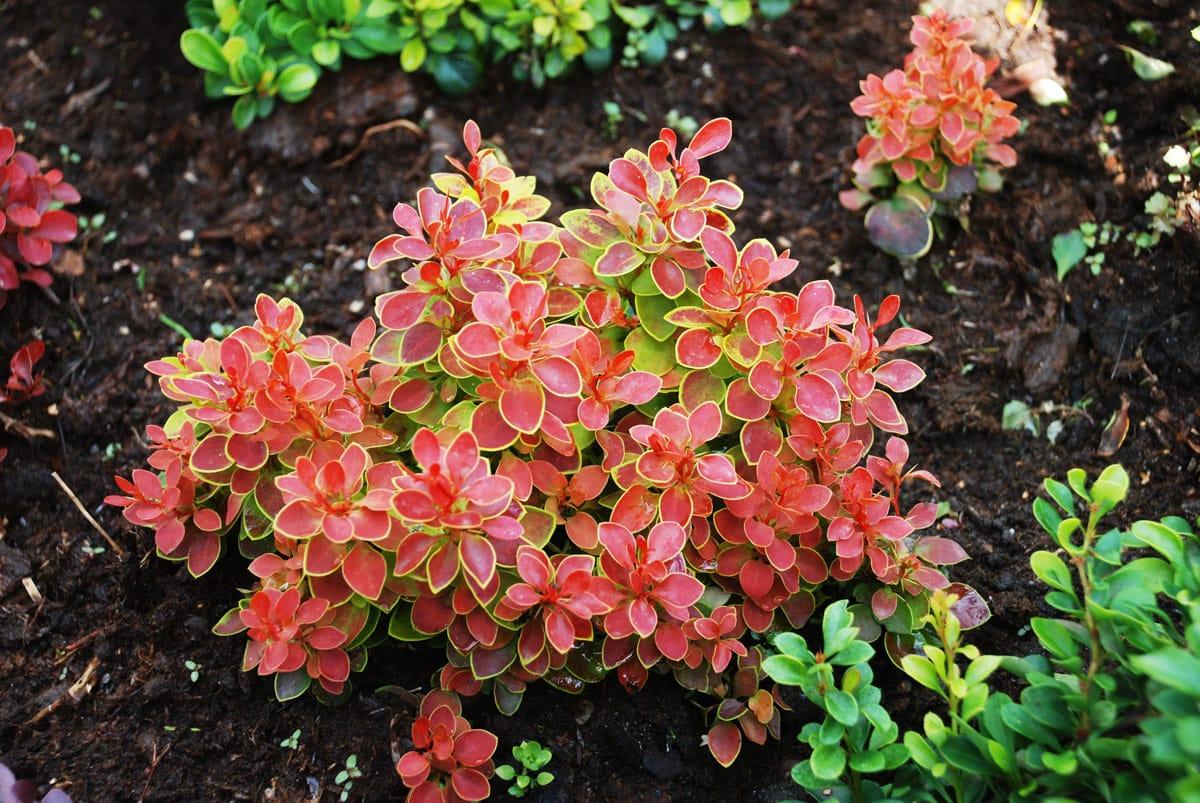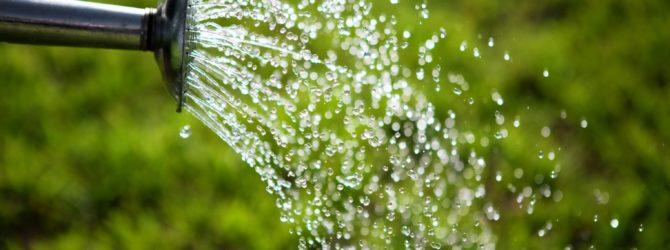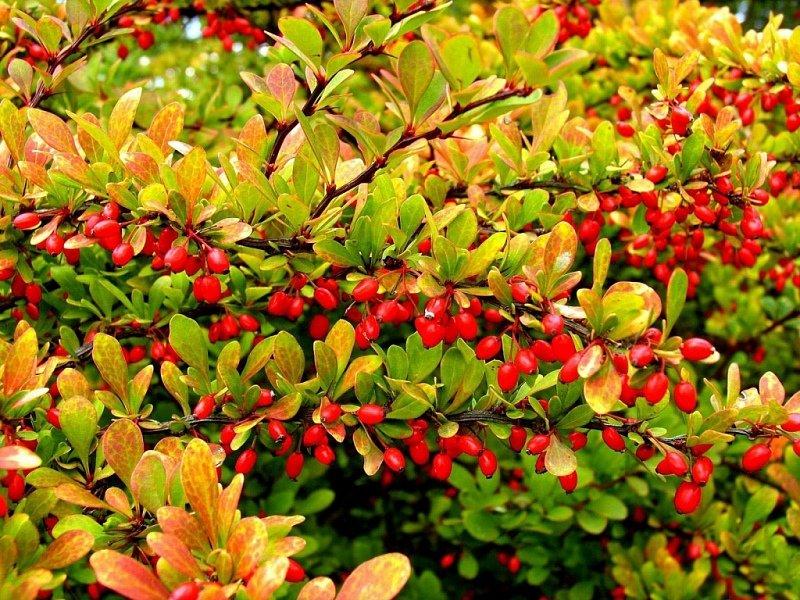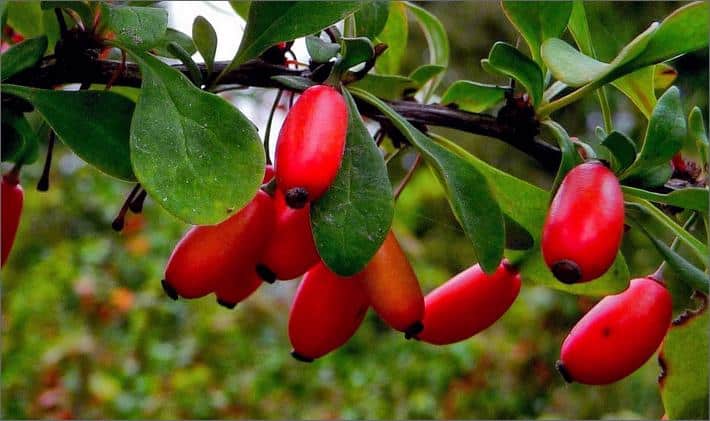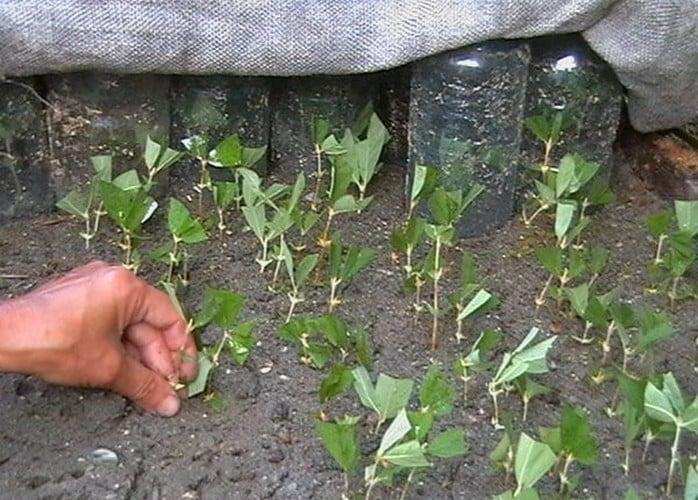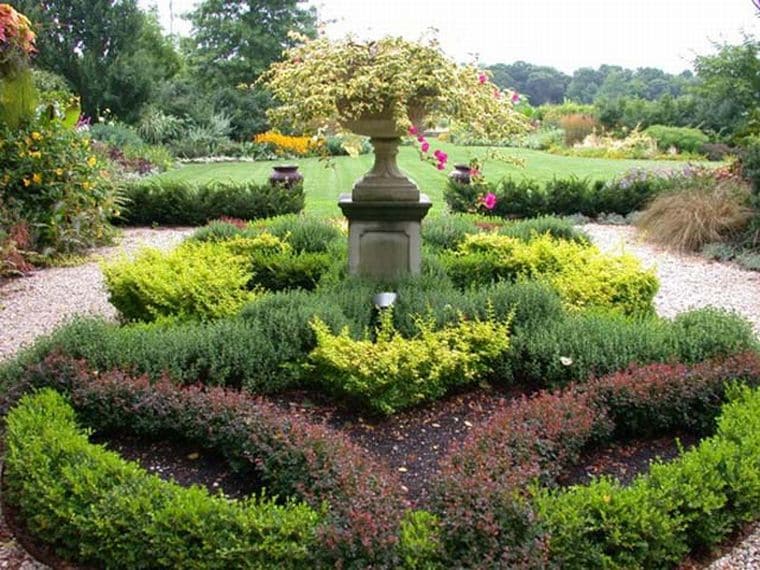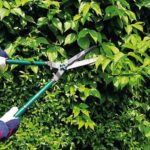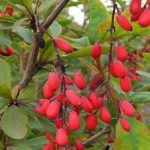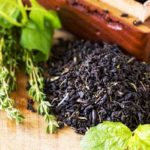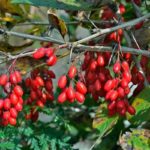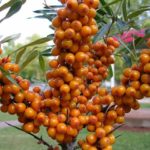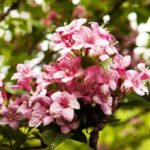Many gardeners want to know how to grow barberry shrubs, plant them and give proper care. The plant is unpretentious: it is easy to cultivate. But you need to get a neat and beautiful bush. Many gardeners grow the crop for its sour fruits. They contain vitamins and antioxidants, so they are very useful. The berries make excellent marmalade and vitamin compotes.
- Is it possible to grow barberry in the garden?
- In what regions is cultivation possible?
- How to select and prepare seedlings for planting
- Required soil composition
- Selecting a location
- Disembarkation dates and scheme
- Advantageous neighborhood
- How to care for a tree on your property
- Irrigation
- Weeding and loosening the soil
- Fertilizer and regularity of watering
- Crown formation
- Preparing the bush for wintering
- Preventive treatment of shrubs
- Features of flowering and fruiting
- What year does it begin to bear fruit?
- Flowering and harvest period
- Collection and use of berries
- How to propagate barberry
- The use of shrubs in landscape design
- What problems do beginning gardeners face?
Is it possible to grow barberry in the garden?
Almost all gardeners grow barberry. At the old dacha you can find a spreading barberry bush. It has green leaves and bright fruits collected in a cluster. Common barberry, planted in a row, forms an impenetrable hedge. Decorative varieties are grown in a modern summer cottage. They have variegated leaves that brighten up the area. Dwarf species are planted on an alpine hill.
The main conditions for successful plant cultivation:
- well-lit place;
- soils with a neutral or slightly alkaline reaction;
- moderate soil moisture.
The plant quickly adapts to living conditions in the garden and begins to bear fruit.
In what regions is cultivation possible?
Under natural conditions, barberry is found in the Caucasus and Primorye. There it forms impenetrable thickets in open ground. The plant has perfectly adapted to life in the gardens of the middle zone.
Adult bushes overwinter without shelter, although young ones require preparation for the cold season.
In the Urals, summers are short and hot, and winters are long and cold. Barberry successfully winters only under a well-made shelter. Without it, the above-ground and underground parts of the bush freeze. In Siberia, in addition to the main shelter, it is necessary to throw snow on the bushes. In the spring, the snowdrift is raked and the cover is removed. Barberry begins to grow.
How to select and prepare seedlings for planting
Preference should be given to 2-year-old seedlings: they take root faster. Plants should have 2-3 well-developed shoots. When purchasing plants with a closed root system, you should turn the container over and inspect the drainage holes. White or light yellow roots should be visible through them. This means that the plant has a developed underground part and will soon take root in the garden.
When purchasing barberry with an open root system, you need to choose a bush with 1-2 strong roots and a developed fibrous part.
Required soil composition
Before planting a bush, you should remember what kind of soil barberry likes. It grows and develops on light soils and prefers soil that has a neutral or slightly alkaline reaction.
Under natural conditions, the shrub settles on mountain slopes or in the foothills. The soils there are not rich in humus and have an alkaline reaction due to the admixture of crushed stone. Therefore, it needs soil in the garden, as well as in its habitat. It is recommended to sand clay soils (to create a lighter environment); acidity must be reduced by adding lime.
Additionally, small crushed stone should be added to the planting hole.
Selecting a location
Before planting, you need to decide what type of barberry will grow in the garden. This determines where the shrub will be planted. Ornamental varieties thrive in partial shade, but fruit-bearing varieties require a place well lit by the sun. Barberry is a spreading plant, so it should be planted away from other crops. The distance should be at least 2.5-3 m.
Disembarkation dates and scheme
Gardeners are interested in: when to plant shrubs. The ideal time for planting is early spring, as soon as the snow melts.The barberry will have enough time to adapt to the new location and build up its root system for winter. Sometimes it is permissible to plant a bush in the fall, but in this case the planting time should be calculated so that the plant has time to take root before the onset of persistent frosts. This will take 3-4 weeks.
But if the purchased plant has a closed root system, it can be planted in the summer. The bush is carefully removed from the pot, the roots are straightened, the dried roots are cut out, and placed in the planting hole.
Barberry purchased in August with an open root system can wait until spring in a trench. To do this, a ditch is torn off, and the excavated soil is piled on the south side of the ditch. The bush is placed obliquely (with its top on the mound) and dug in. At the top of the hill, part of the shoots with 2-3 buds is left. With the onset of frost, the trench is covered with white lutrasil and covered with snow.
Advantageous neighborhood
Barberry grows intensively, but does not take over the neighboring territory. The exception is old varieties: they produce an abundance of root shoots. The shrub lives in one place for up to 50 years; an adult plant cannot tolerate transplantation. But during flowering, pollinating insects flock to it: and this should be used.
Experienced gardeners place strawberry beds next to it: bees pollinate the flowers, and the yield increases. It is important to plant plants nearby that bloom at the same time as barberry.
How to care for a tree on your property
In order to get a beautiful and regularly fruiting plant, it needs to create conditions close to real ones. The beginning of fruiting depends on how correctly the barberry is planted.
The rules for growing shrubs are simple: you need to feed the bush on time, water it and prune it.
Irrigation
Barberry does not tolerate excessive moisture. It only needs to be watered during severe drought. In a normal summer, he provides himself with water. Monitoring the humidity of the tree trunk is required for young plants that were planted last spring.
In order to retain moisture in the soil, the tree trunk circle should be mulched with dried plant debris or chopped wood chips. To prevent the outflow of nitrogen from the soil, it is recommended to spill the wood chips with a urea solution.
Weeding and loosening the soil
Young barberries require regular weeding: the plants are light-loving, and quickly developing weeds inhibit them. Weeding is recommended to be combined with loosening. In this case, you should be especially careful not to damage the roots. Mature plants feel great on turfed tree trunks. With this growing method, the grass should be mowed regularly.
Fertilizer and regularity of watering
In nature, the plant does well without fertilizer. But cultivated varieties need fertilizing. But it is important to remember: the plant cannot tolerate excess nutrition. When planting, the planting hole is filled with complex fertilizer. Therefore, there is no need to feed barberry for the next 3 years.
Starting from the 4th year, decorative varieties require the application of nitrogen in the spring. You should water them with a urea solution (30 g per 10 liters of water). Fruit bushes require the addition of potassium and phosphorus. The first feeding is carried out in May-June, the second in the fall, before preparing the plant for winter.
You should not feed shrubs often: excess nutrition causes depression of the plant and provokes diseases.
Crown formation
Barberry is an ideal plant for the garden.Without formation, it turns into a spreading ball, but tangled branches are very rare: the shoots grow almost vertically. The gardener is only required to promptly cut out damaged and dried branches, as well as those that interfere with the care of the shrub.
Decorative varieties can be formed in the form of any shape: pyramid, cube, cone. Beginning gardeners will need a topiary frame or template for this. The fence is usually formed in the form of a rectangular parallelepiped. After pruning, the plant should be fed: decorative varieties should be given foliar feeding on the leaves. An infusion of fermented herbs will do.
After sanitary pruning in the fall, the plant is fed with phosphorus-potassium fertilizers. But it is important to remember: barberry recovers quickly, so pruning should be done regularly.
Preparing the bush for wintering
In regions where winter temperatures are rarely below zero, barberry overwinters without shelter. It is enough to carry out sanitary pruning and add a mineral complex.
But in other areas the plant requires additional preparation for winter:
- cut out immature shoots (they are light green);
- shorten the rest by 2/3;
- tie the crown with twine or wire;
- cover the top with white lutrasil or spunbond;
- cover the root zone with spruce branches with a layer of 15-20 cm (it will also protect from rodents).
After heavy snowfalls, snow should be poured onto the shelter: this way the plant will be better protected.
Preventive treatment of shrubs
Barberry is damaged by aphids, moths and sawflies. To prevent pest attacks in spring, it is recommended to carry out preventive treatment of shrubs. Spraying with Karbofos solution and copper-containing preparations is suitable.
Features of flowering and fruiting
Blooming barberry is an excellent honey plant. It attracts pollinating insects to the garden. Long-lasting flowering: up to 3 weeks.
What year does it begin to bear fruit?
Berry barberries, when planted as 2-year-old seedlings, begin to bear fruit in the 3rd year of life in the garden. When forcing plants from seeds - in the 5th-6th year. The shrub produces a harvest annually.
Flowering and harvest period
Flowering begins in May, but there is no clear date: it depends on average daily temperatures. The bush blooms for 2-3 weeks. At the same time, it smells nice.
Collection and use of berries
Red barberry ripens at the end of July. The fruits do not fall off and remain on the branches until cold weather. But their taste deteriorates: for use as food and for preparing preparations, the fruits must be picked before the beginning of September.
How to propagate barberry
Gardeners know various methods of propagating barberry:
- Old varieties of barberry reproduce by abundant root shoots. It is dug up and planted in permanent places in the spring.
- Hybrids and plants on a rootstock should be propagated exclusively by cuttings or grafting into the crown of another barberry: other methods will not convey the qualities of the mother plant.
- The varieties are effectively (albeit time consuming) propagated by seeds. In this case, the need to stratify the material should be taken into account. It is required to either sow before winter or keep for 60 days in the refrigerator in a damp cloth.
- A method that does not require labor from the gardener is propagation by layering. In early spring, the branch is pinned to the ground, covered with soil, and the top is cut off. Next spring, the finished plant with a lump of earth is planted in a permanent place.
- Delenka is a method used when there is a desire to transplant an adult bush.In the spring, the plant is carefully removed from the ground, excess soil is shaken off, and damaged roots are cut off. Then they are divided into the required number of parts, weak shoots are cut out from the above-ground part, strong shoots are cut to stumps with 3-4 buds. The delenki are immediately planted in a permanent place and shaded from the sun.
It is important to remember: seed and planting material should be taken only from healthy plants.
The use of shrubs in landscape design
The main value of barberry is its rapid recovery after pruning and decorative value throughout the year: from early spring to winter. Against the background of snow cover, scarlet clusters of berries look attractive. It is the decorative nature of the shrub that makes it attractive for landscape design.
Breeders offer various decorative varieties and hybrids of barberry. They are small in size and have unexpected foliage colors. But the fruits have a specific bitter taste: they are not eaten. Such graceful bushes decorate rock gardens and paths.
Gardeners use large trees to create impassable hedges. In this case, they are planted in a checkerboard pattern at a distance of 50-100 cm from each other. Common barberry can be used as a solitary plant. It is given its original shape by pruning and admired throughout the year.
What problems do beginning gardeners face?
Barberry is an unpretentious plant, and novice gardeners have nothing to fear: they can easily cope with caring for it. But it is recommended to anticipate the possibility of making some mistakes:
- Planting in lowlands or areas flooded in spring. Barberry does not tolerate wet roots.
- Placement on acidic soils. The bush stops growing.
- Excess nitrogen in the soil.This mistake leads to fungal disease.
- Planting too often. Plants are difficult to care for.
- Frequent and abundant watering. The roots rot and the plant dies.
- Neglecting regular pruning. In fruit barberries it leads to a decrease in yield, in ornamental ones it leads to a loss of foliage color.
- Placement in the shade. The plant will be oppressed: it loves sunlight.
- Planting too close to other crops. Barberry is actively growing, and its shoots will interfere with caring for your neighbors.
- An attempt to replant an adult bush. Most likely he will die. It is recommended to use layering or cuttings for planting in a new location.
- Planting a seedling with an open root system at the wrong time.
To successfully grow shrubs, you should carefully study all the rules and follow them.

